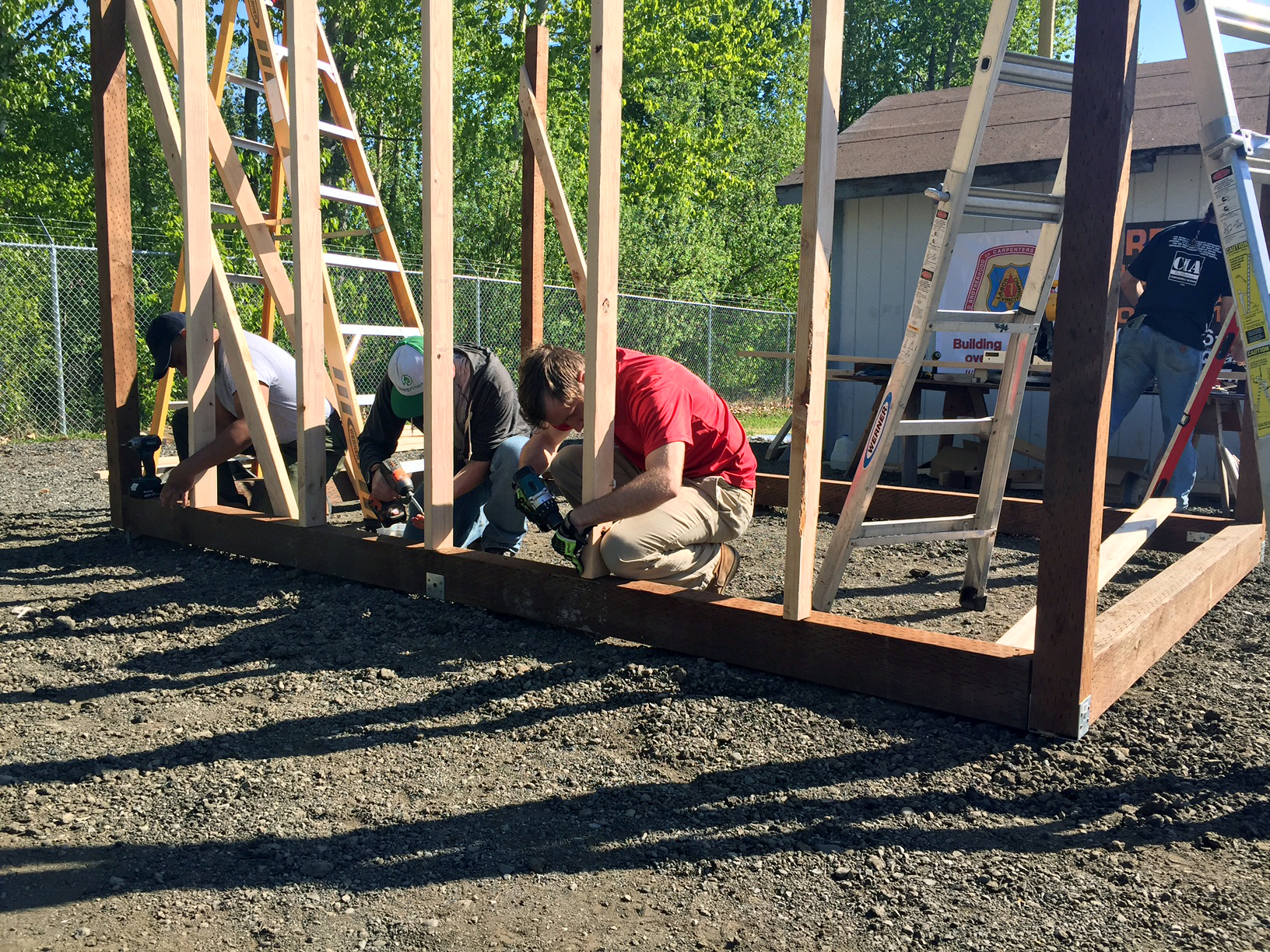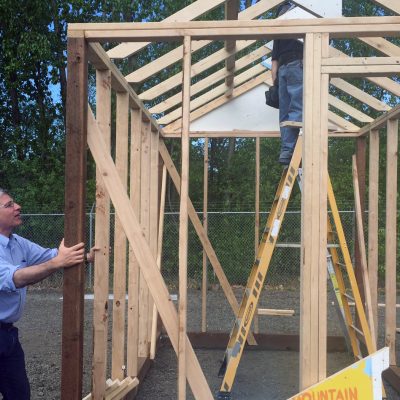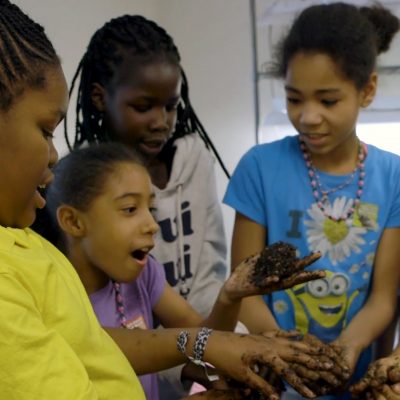Building Resilience in Anchorage, Alaska: Preserving a Long-Standing Tradition of Self-Reliance
The Cities of Service Resilience AmeriCorps program trains and supports AmeriCorps VISTA members to help communities prepare for catastrophic events and ongoing challenges. Serving in city halls, AmeriCorps members engage citizens and community partners to build and sustain resilience in vulnerable neighborhoods.
T
he people of Alaska have a history of independence and self-reliance, in part due to the state’s remote location and the vast distance between it and the continental United States. “Contrary to what the maps show, Alaska is not a small island located off southern California,” says Anchorage Mayor Ethan Berkowitz. A southern city in the United States’ largest state, Anchorage’s distance from the equator (more than 1,000 miles farther than Seattle) makes it very cold and dark for a large part of the year.
Many of Anchorage’s almost 300,000 residents are less self-reliant than they once were, and the city imports most of its food and goods from outside the state. The vast majority of the population in the state of Alaska receives food and goods imported through the Port of Anchorage. This high usage coupled with an aging infrastructure makes the Port vulnerable to seismic events and other environmental challenges. Even a minor delay could mean no milk at the grocery store. As Mayor Berkowitz explains, “We’re incredibly dependent on logistics to make sure we get our food here in Anchorage. We have three to four days of food supplies on the shelves. If there’s a major disruption, we’ve got a major problem.”
“We’re incredibly dependent on logistics to make sure we get our food here in Anchorage. We have 3–4 days of food supplies on the shelves. If there’s a major disruption, we’ve got a major problem.”
— Mayor Ethan Berkowitz
AmeriCorps Members Spend Significant Time in Community to Understand Needs
Anchorage is one of 10 U.S. cities selected to receive Cities of Service Resilience AmeriCorps members. The AmeriCorps members serve full time in city hall, engaging citizens in low-income areas to help increase the city’s resilience.
In Anchorage, they decided to have the AmeriCorps members work part time on-site at community organizations so that they could forge even tighter connections between local government and its citizens. “Having that ability for our AmeriCorps members to be in these communities on a daily basis gives us all a connection that we never had before,” reports Ona Brause, Deputy Chief of Staff to Mayor Berkowitz.
It was during his time at Anchorage Community Land Trust that AmeriCorps member Jared James learned about a local elementary school in the Mountain View neighborhood that wanted to build a greenhouse to teach its students how to grow their own food.
Mountain View was an ideal neighborhood for a resilience project to take place. One of the most diverse neighborhoods in the country, Mountain View struggles with a high rate of unemployment and meeting basic needs for many of its immigrant, refugee, and Alaskan native residents. The neighborhood, where more than 100 languages are spoken, is in the midst of a renaissance with businesses moving in and housing being created. The greenhouse project and projects like it bring community members together. Many residents can share their vast knowledge of growing food that is native to their cultures with their neighbors.
Cross-Sector Partnerships Strengthen Plan for Greenhouse
While the school had begun the permitting process for the greenhouse, it did not have the resources to turn the vision into a reality. James and his fellow AmeriCorps member, Cassondra Newman, talked to school administrators to understand their goals and then worked with city hall to figure out what resources they could provide to help bring the project to life.
In partnership with the Cooperative Extension Office at the University of Alaska Fairbanks and the Junior Master Gardeners Program, affiliated with the Alaska Botanical Gardens, the AmeriCorps members helped the school extend the curriculum beyond learning how to grow food and integrated science, food independence, and resilience into the plans. Instructors teach parts of the curriculum in the greenhouse, where students plant and grow seeds, and take them to plant at home during the summer. Community members serve as guest speakers and do the outfitting and ongoing maintenance of the greenhouse.
James led the build with the support of city agencies, Mountain View Elementary School administration, 21 Century After School Program leaders, local businesses, and community members. He designed the greenhouse and then took it to McCool Carlson Green Architects to make sure his plans were done correctly. He coordinated with the local carpenters union, Local #1281, to do the foreman work and partnered with Spenard Builders Supply Company to get all the supplies needed. Carpenters, union members, local credit union staff, and community members helped with the build itself. Students put their personal touch on the greenhouse with hand-painted boards that are part of the structure.
 Skilled volunteers frame the greenhouse at Mountain View Elementary School. Photo Credit: Municipality of Anchorage
Skilled volunteers frame the greenhouse at Mountain View Elementary School. Photo Credit: Municipality of Anchorage
Greenhouse Project Serves as Successful Model for Others to Follow
Due to the success of this first project, a public park with edible landscaping and experiential learning for local students will be replicated in the Fairview neighborhood, where volunteers will help with building, planting, and maintenance. More projects are in the works to increase food security and resilience.
Cities of Service has served as a linchpin in the process. As James explains, “Cities of Service is the reason I came up to Anchorage. They have helped guide us with curriculum and ideas on what we can do to work toward a more resilient, more sustainable community, not just from a municipal and government level, but also from a ground-up community level.”
“Cities of Service is the reason I came up to Anchorage. They have helped guide us with curriculum and ideas on what we can do to work toward a more resilient, more sustainable community, not just from a municipal and government level, but also from a ground-up community level.”
— Jared James, Resilience AmeriCorps Member
. . .
Cities of Service’s work is made possible with generous funding from Bloomberg Philanthropies. Resilience AmeriCorps is supported by The Rockefeller Foundation, the Corporation for National and Community Service, and Walmart Foundation.


